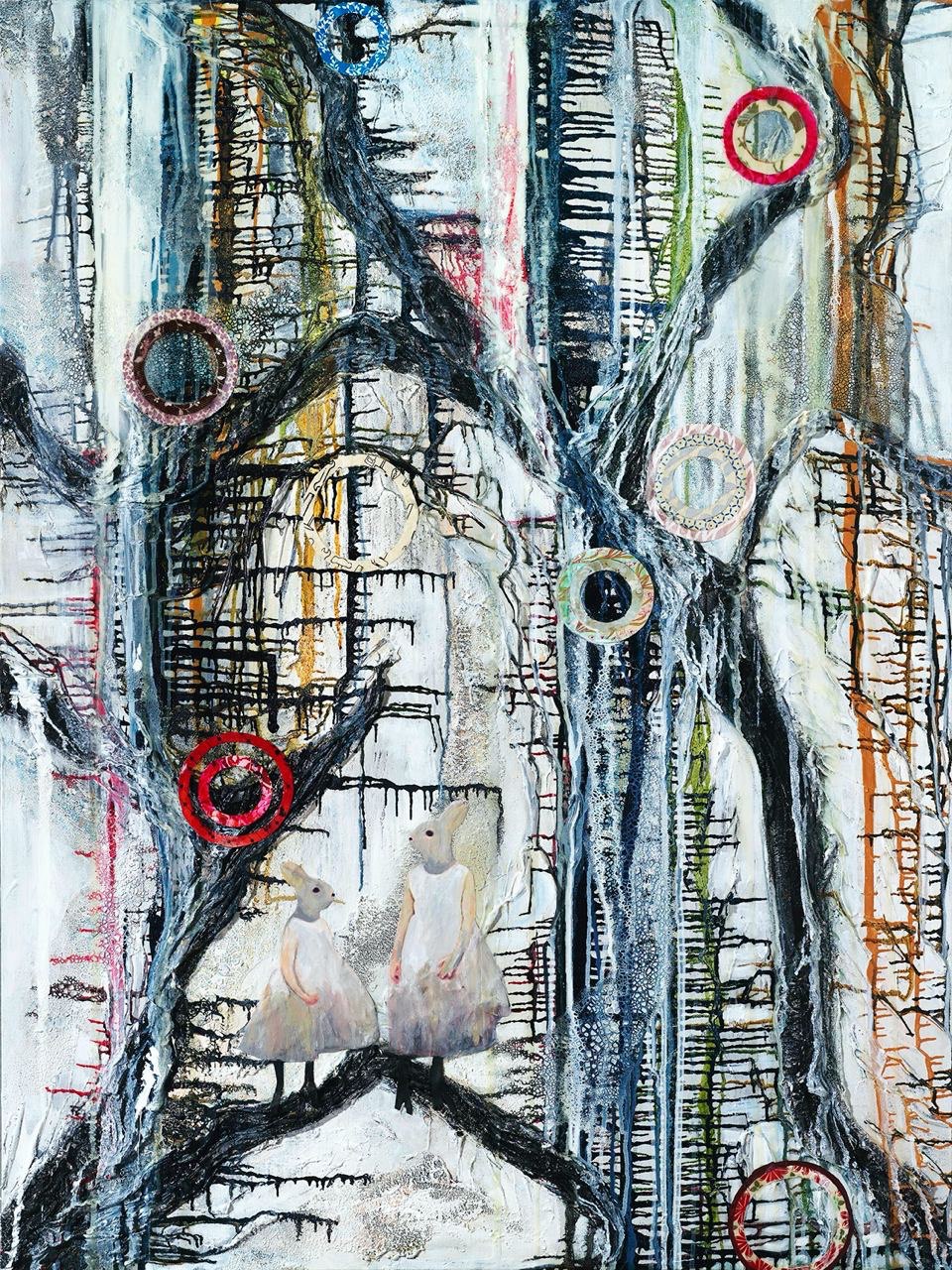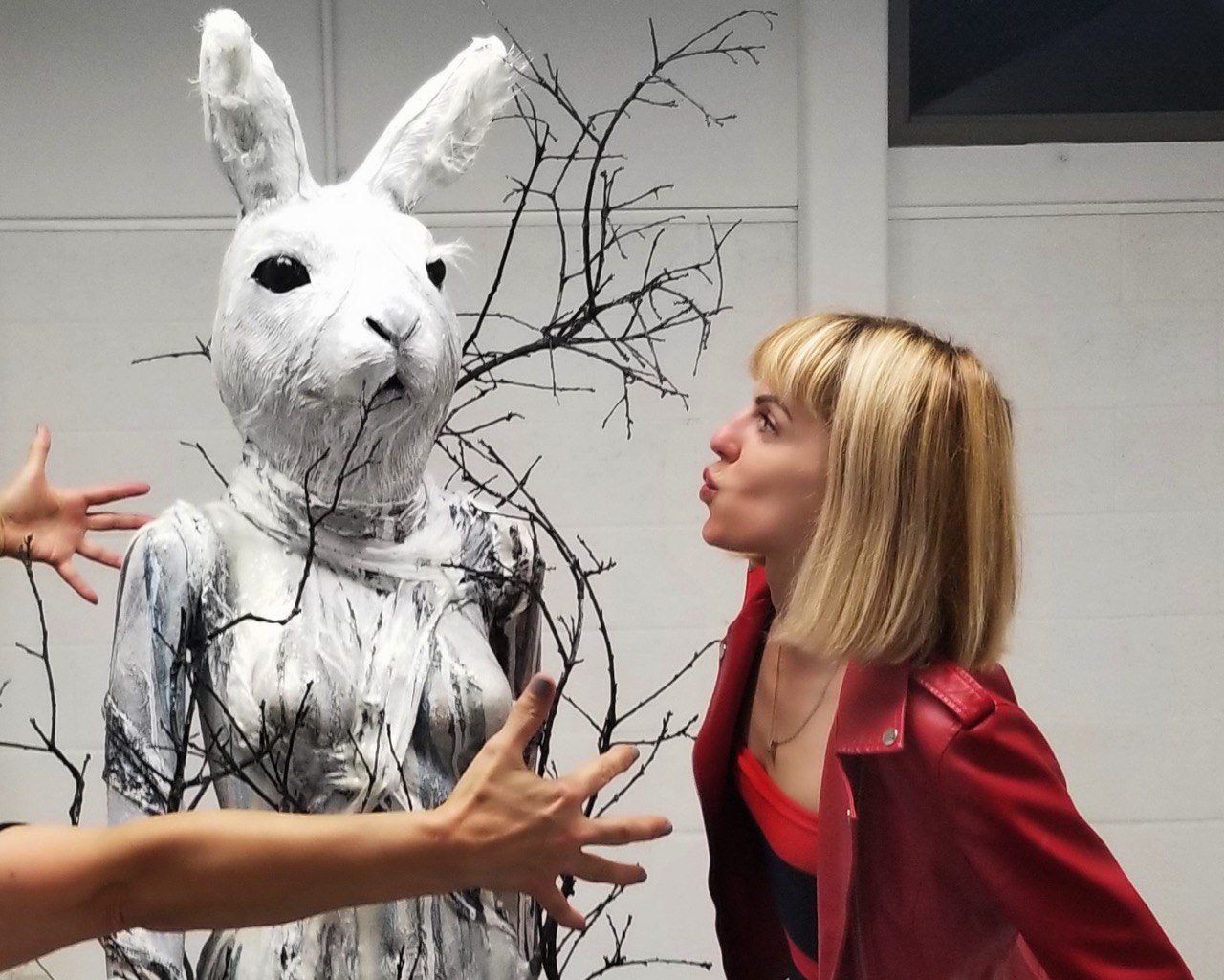Meet Ana Maria Gower | Artist


We had the good fortune of connecting with Ana Maria Gower and we’ve shared our conversation below.
Hi Ana Maria, what role has risk played in your life or career?
Sometimes I feel like people overcomplicate the idea of risk. You hear people talking about managing it, hedging, and so on. And there is definitely a place for some sort of strategic thinking about risk. However, I think we often forget the heart of the matter.
Risk is a necessary condition to get to a place where you want to be. It simply can’t be any other way. If you have a goal in mind and this goal is currently beyond your reach, you simply cannot attain it without exposing yourself to risk in some way.
If you are a creative person, this can be the risk of rejection, the risk of wasting your time and effort and never seeing any fruit of your labor. It is pretty scary to put your most intimate thoughts and feelings on canvas and never get any appreciation. This stops many people from even trying to live their authentic lives, which is exactly the wrong response. I think that if something is risky in that way, it is a good indication that it is worth doing.
This approach has worked well for me throughout my life. For a person coming from the civil war in Yugoslavia (who mostly dreamt of being a soldier), entering a fine arts program in London was risky and that’s why I did it. Moving to the US, where I knew exactly no one, with a hope of building a new life was a risk and therefore had to be done. Having solo art shows in California and back in Serbia was risky—there is no one to hide behind in a solo show—but it was the only way to put myself on the art map and was the right choice.
Every time I put a line of paint on the canvas I’m risking everything, but that’s what makes it interesting and right. I think that in a way I’m not special in this regard. Whether people see it or not, they are risking something every day of their lives, and the biggest risk is failing to move outside of your comfort zone and never becoming who you were meant to be.

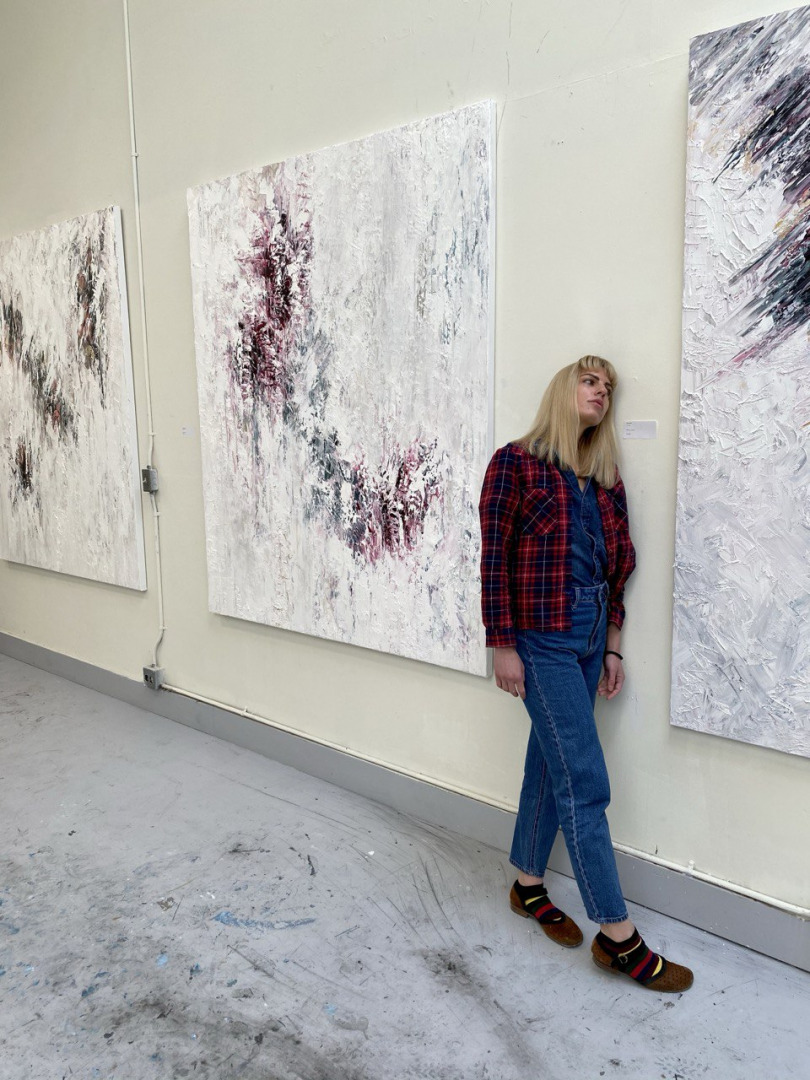
Alright, so let’s move onto what keeps you busy professionally?
My art is a conversation between materials and memory, between what was and what could be. I work with traditional paints alongside found objects (pieces of clothing, old stamps, photographs) things that weren’t meant for art but carry the energy of the real world within them. These items become naturally occurring symbols, each one packed with the life it was part of before it found its way to my canvas. This approach to mixed media reflects something fundamental about my journey: the belief that transformation is always possible, that objects and people can reinvent themselves while still carrying their history.
This philosophy of potential runs through everything I create. In my “Life as Potential” series, I explored branching structures, from tree limbs to coastlines to human veins, showing how everything is in the process of becoming. My “Memories” series deals with transformation, examining how our minds constantly revise the past, turning memories into fragments from which we construct our destiny.
My path here has been anything but conventional. I left Belgrade for London on a full scholarship to Central Saint Martins. At twenty-five, I moved to California knowing no one and ended up pursuing an MBA. Some might find this combination odd (fine arts and business) but understanding both sides has been crucial. The art world has never been just about creation; it’s about sustainability and strategy too.
Each geographic move has deepened my work. The further I get from my origin story, the larger it looms in my memory, but distance also grants perspective. I’m now both observer and participant. This showed clearly when I returned to Serbia for exhibitions after years of building my career in America. I worried about introducing myself to people I understood but didn’t really know, would they see me as an outsider? Instead, those shows in Belgrade felt like important circles closing, my work speaking a language that transcended the years and miles between us.
Even when addressing difficult subjects like the 1999 NATO bombing in my “Violet Days” series, I found myself drawn to moments of unexpected beauty that emerged from those experiences. My “Women” series explored complex relationships with women who affected me throughout my life, something I could only honestly examine with the distance that time and geography provided.
I work large scale, building up textures that create an impasto effect, moving between abstract and figurative styles depending on what the piece demands. Though I’ve been working more abstractly lately, the figurative work, especially portraits, remains the most emotionally charged for me.
What sets me apart isn’t just my unusual path or combination of experiences. It’s the synthesis that happens when you allow all your worlds, Eastern European and American, business and artistic, past and present, to coexist on the same canvas. My work is about potential because I’ve lived it: the potential to transform, to bridge worlds, to find beauty in unexpected places.
This is what I want the world to know: art isn’t about choosing between identities or experiences. It’s about allowing everything you’ve been and everything you’re becoming to exist simultaneously, creating something entirely new.
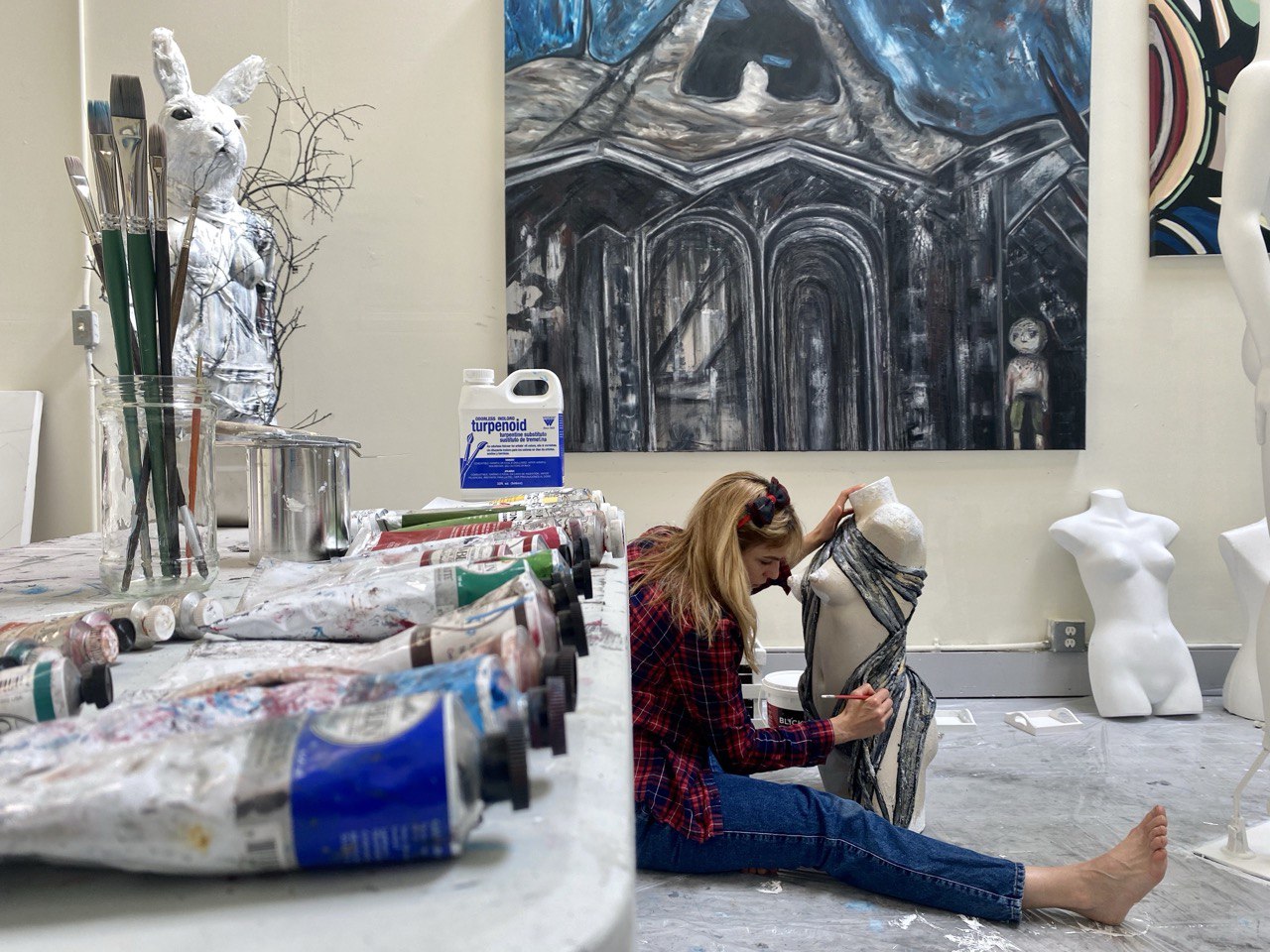
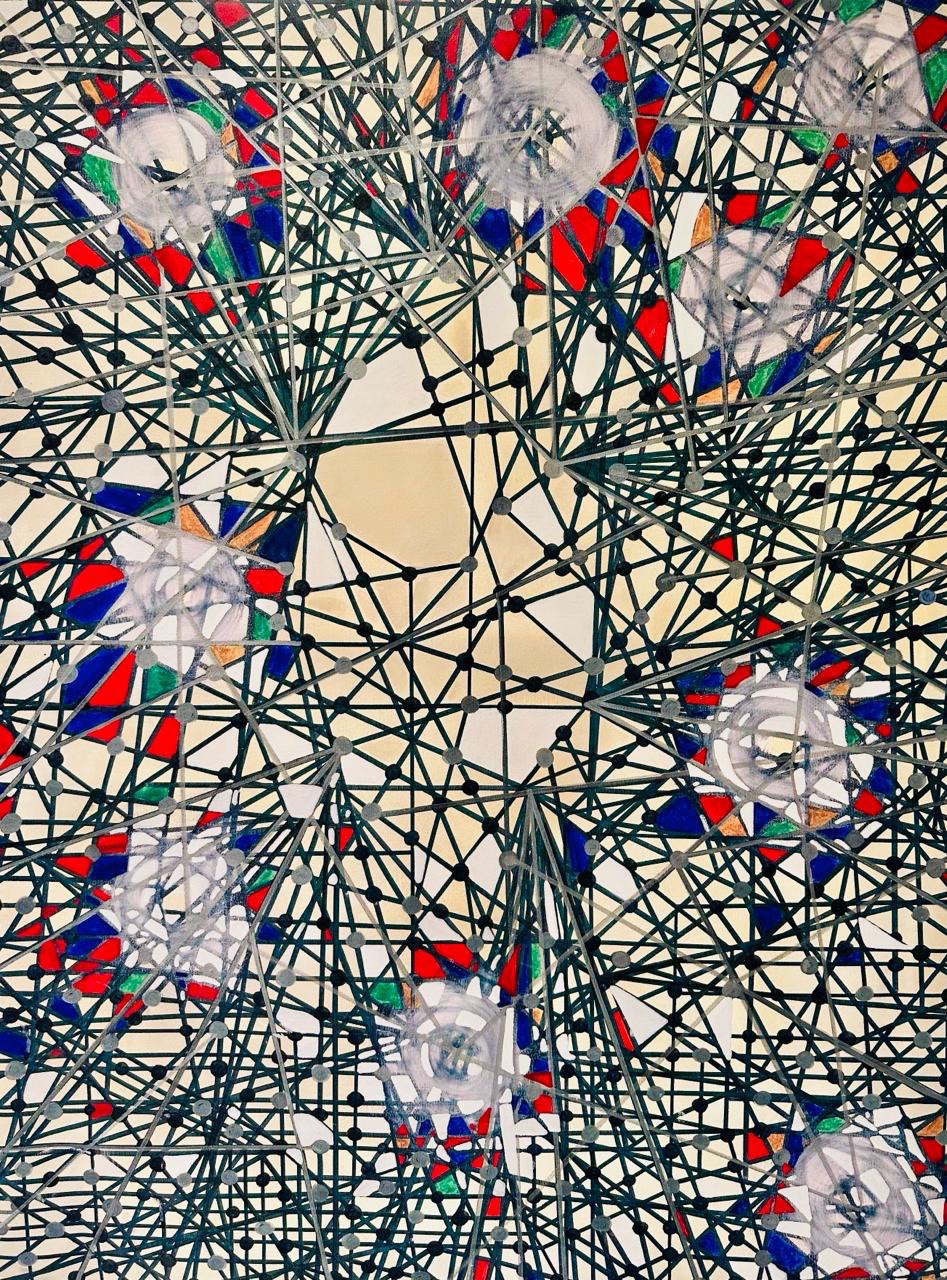
Any places to eat or things to do that you can share with our readers? If they have a friend visiting town, what are some spots they could take them to?
When my best friend visits Dallas, I have to confess my itinerary is more like a perfect day rather than a perfect week. It just so happened that when we moved here, I gave birth to my daughter two months later, so we never really had the chance to explore all the hidden gems and therefore I don’t have enough “material” for a week.. But I’ve perfected my one-day tour of the small bits that I got to know and love, and it’s pretty fantastic!
We’d start in Grapevine, where we’ve settled, with a proper European-style coffee session. You know how Europeans love sitting in cafes for hours. Coffee is not something you grab on the way to work, it’s a process.! We’d hit Re:defined Coffee House first, then probably wander over to Napoli’s for round two. The Main Street in Grapevine is perfect for strolling and people-watching.
Next, I’d drag them to the Kimbell Art Museum in Fort Worth. They’d probably protest: not everyone shares my art obsession, but that’s what friends are for, right? The collection there is incredible. I’d make them look at everything from Turner to Miró to Rembrandt, plus the stunning medieval Japanese art. My tastes are all over the map, and Kimbell feeds that beautifully.
Once I’ve sufficiently tortured them with culture, we’d head for proper Texas BBQ to make amends. It’s a toss-up between Hurtado and Hard Eight. Hurtado has Texas Twinkies that are simple but for me absolutely worth the trip, but Hard Eight has the best sausage I’ve ever had.
The afternoon would be pure Texas fun at the Texas Gun Experience shooting range back in Grapevine. There’s something perfect about going from Renaissance paintings to target practice. We’d wrap up with a cold pint at Hop and Sting Brewery, which has become our go-to spot for unwinding.
As for the rest of the week? I’d give them my blessing to explore DFW on their own and report back with their discoveries. That way, when I finally get a break from my artistic and parental duties, I’ll have a whole list of new places to check out!
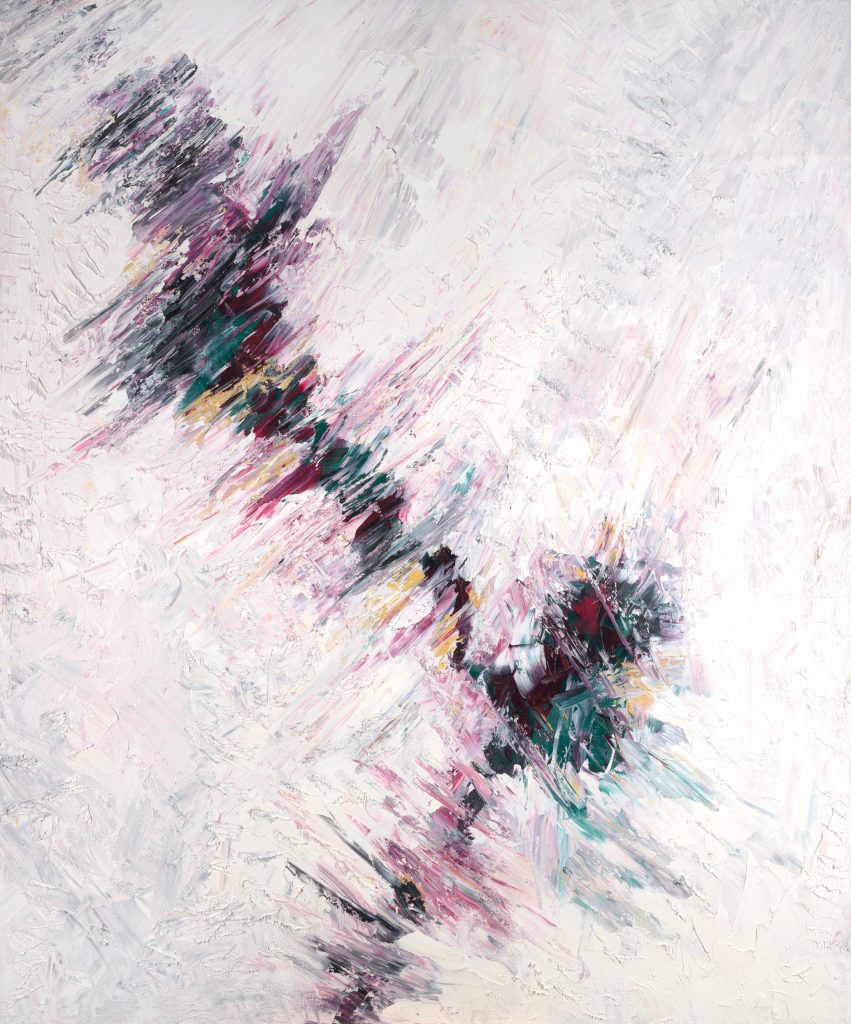
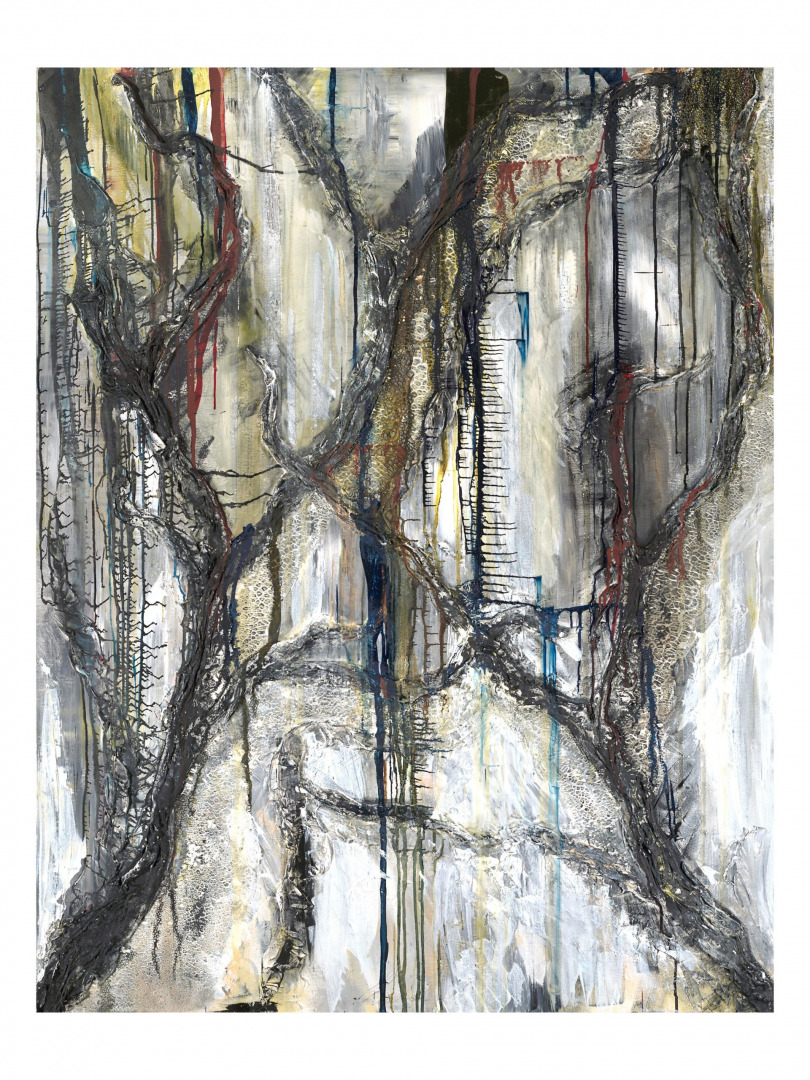
The Shoutout series is all about recognizing that our success and where we are in life is at least somewhat thanks to the efforts, support, mentorship, love and encouragement of others. So is there someone that you want to dedicate your shoutout to?
My husband, Alex Anokhin, who long ago renewed my sense of confidence in my art and helped me to see potential in all things. When we met, I was struggling with whether my art mattered, whether putting myself through the vulnerability of creation was worth it. Alex has this incredible gift for seeing possibility where others see obstacles. First time he saw my older paintings (I wasn’t creating for a while at that moment), he immediately told me – “You must get back into it.” He doesn’t just support my art; he understands it, sometime better than I do. When I doubt myself, he reminds me why I picked up a brush in the first place.
My grandmother, Stojanka Bulatović, who brought me up, never gave up on me, and invested time, care, and love to make me the person I am today. She raised me during and after the Yugoslav civil war, when survival itself was an achievement. Yet she never let circumstances limit my life. She showed me through her own life that we can endure terrible things and still choose to see the good in the world.
Website: https://anamariagower.com
